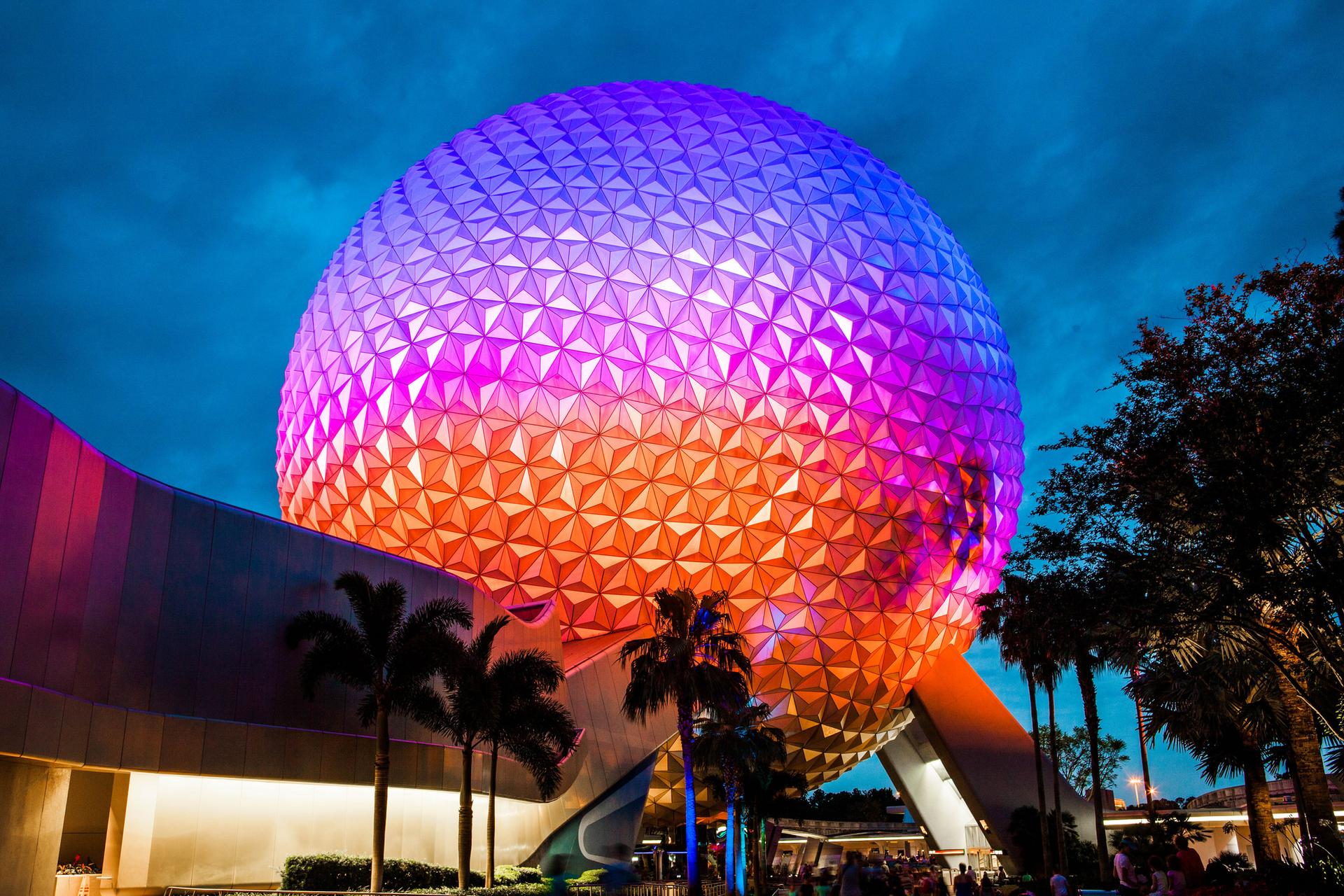How a whole new world of technology reinvented Disney
Epcot's iconic Spaceship Earth at Walt Disney World.
It’s a typical day in “The Happiest Place on Earth.” The sun is shinning and roller coasters are coasting. It also happens to be a small park-goer's birthday. As the child walks from ride to ride, costumed characters wish her a happy birthday.
It might be called the Magic Kingdom, but it’s not magic. Actually, Disney World uses digital wristbands to track patrons, making personalized experiences like this possible.
But it wasn’t always like this, according to Fast Company senior writer Austin Carr.
In the early 2000s, Disney found they were falling behind. Disneyland had opened in 1955 — exactly 60 years ago Friday — but the rise of smartphones, Facebook, and hand-held tech was beginning to threaten the traditional theme park experience. Kids could play video games, tweet from their phones, and Snapchat their friends; suddenly, an afternoon of spinning teacups with costumed characters began to feel like a thing of the past.
A whole new world of rising technology was an obvious driver. More subtle, though, was the hassle and stress of a day at Disney. Think about it: you’re a parent walking through a massive theme park, maybe pushing a stroller through a crowd, and carring around maps, keys, credit cards, sunscreen, and tickets, all while worrying about your kids and maybe squeezing in some fun. The Happiest Place on Earth? Maybe not.
Disney execs went to work to improve the situation.
“One of the things they realized is that people had too many things in their pockets. They thought, ‘Could we eliminate that? Could we just make that into one entitlement?’” explains Carr.
The solution lay in using technology, which was in part creating the problem, to fuel the solution. Enter the MagicBand: a digital wristband that acts as a ticket, hotel key, credit card, and tracker all in one that effectively de-clutters and streamlines the park experience.
This isn’t the first advance Disney has made in its six decades as an American institution. The company might stand for all things nostalgic, but their history as a park is marked by consistent creativity and innovation.
For example, they were the first to use switch back line strategies, a way of folding lines to use less space, and they introduced the Fast Pass in the ‘90s.
But despite these advances, the park still retains original characters — like Mickey and Minnie Mouse — dreamt up nearly a century ago as a central element of the park. This careful balance between the old and the new is what keeps Disney alluring. Carr explains:
“What separates Disney from other competitors in the space is that is has both continued to innovate over many decades and never grown stagnant, but its also kept that key nostalgia that brings parents back with their kids, back with their grandkids, and so forth, so they can connect over a shared experience they had when they were growing up.”
As for the future, Carr says it's impossible to predict. He muses that classic fairy tales, though, are part of Disney's central appeal:
“I would say that my hope is that they keep the core nostalgia. If you go to these parks, you still see kids dressed up as Cinderella, or Sleeping Beauty, or Snow White, because those are the animations, those are the films that they love and hold close to their heart… If Disney can hold onto that core nostalgia that makes kids' faces light up and adults' faces as well, then they will be fine in the decades to come.”
Read Carr’s “The Messy Business of Reinventing Happiness” published in Fast Company.
This story first aired as an interview on PRI's Innovation Hub.
We’d love to hear your thoughts on The World. Please take our 5-min. survey.
